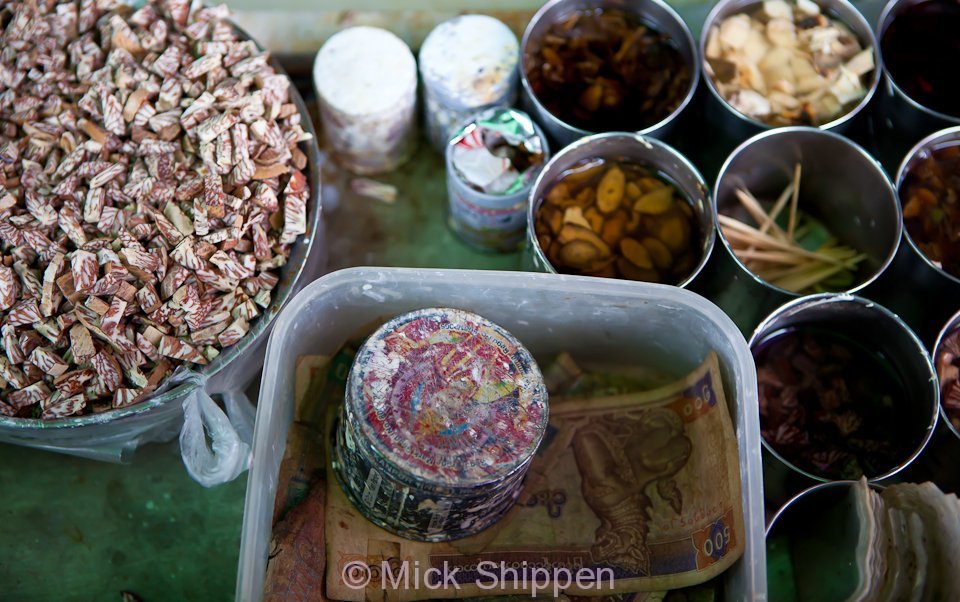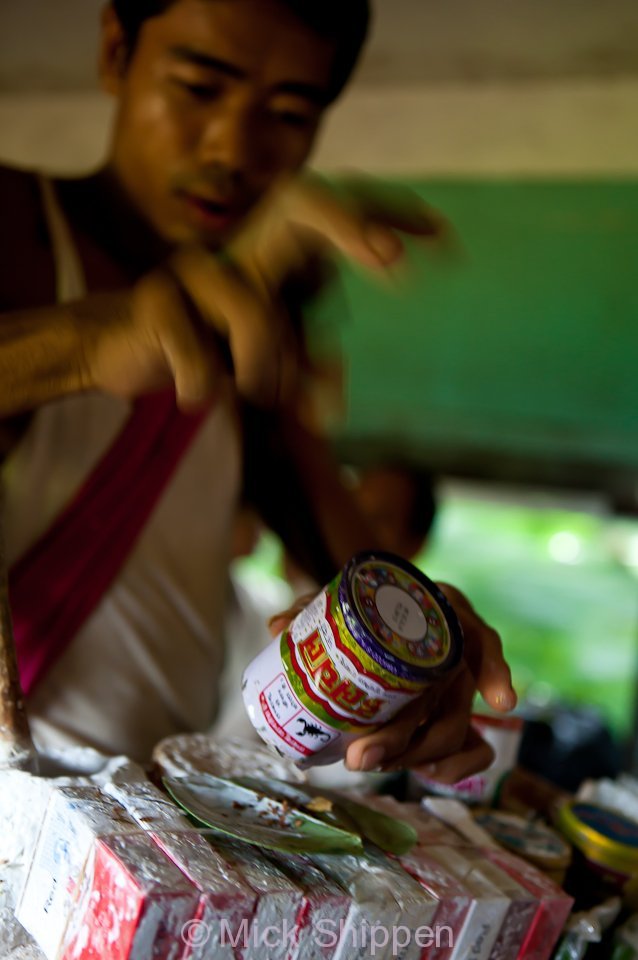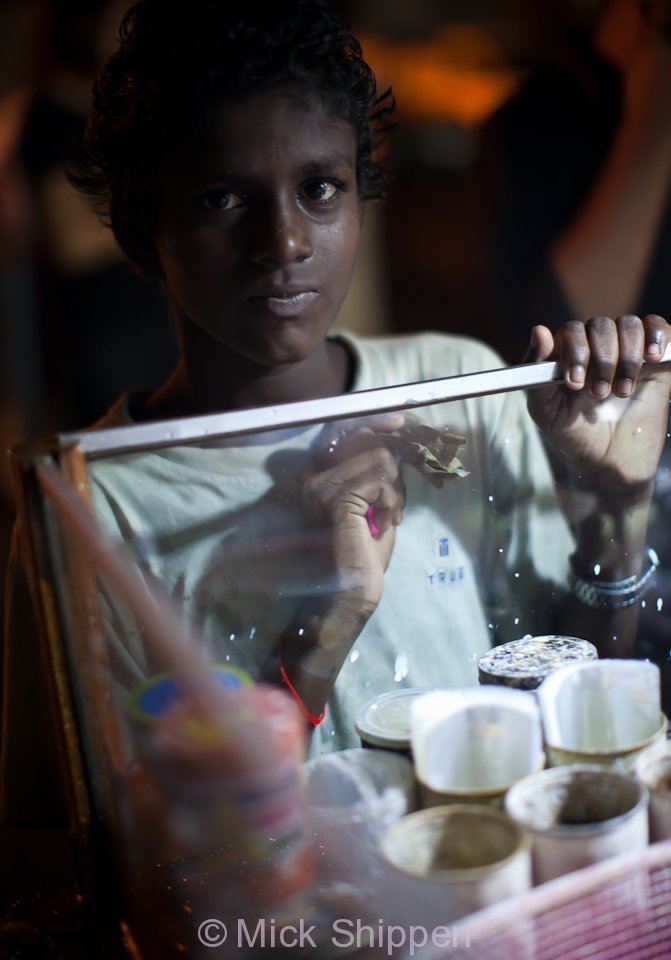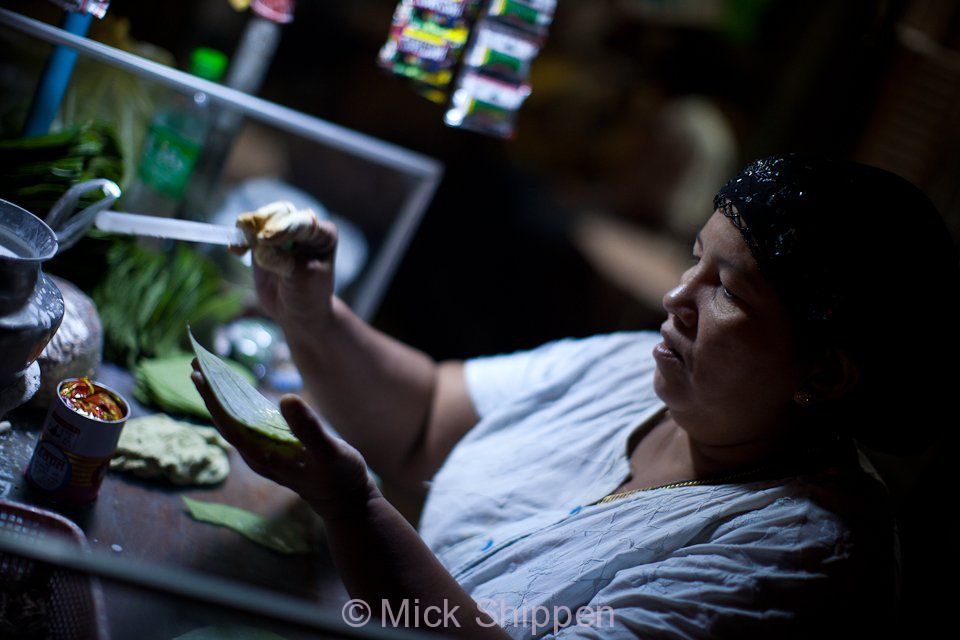You don’t have to be in Myanmar long before it becomes apparent that the locals love chewing betel nut. Here’s a section from my book, The Traditional Ceramics of South East Asia on the topic to accompany a few recent pictures. More shots can also be viewed in the Myanmar Gallery.
The chewing of betel nut in Myanmar is still prevalent through the country and popular with men and women alike. On almost every street corner sellers stand behind their counters preparing small wraps of the mildly stimulating mixture. Mobile vendors also walk the streets with wooden trays around their necks, each well stocked with the essential ingredients.

Between friends and visitors a welcome is often extended in the form of these small emerald-green packets – the ‘local chew’. Stained orange lips and teeth as well as the ubiquitous rust-coloured splats on the pavements are all signs of betel chewing. The nut itself which is responsible for the trademark orange staining is from the areca palm while the leaf in which it is wrapped comes from the piper betel vine.

The contents of the betel chews vary according to personal taste. The traditional mixture in Myanmar consists of a betel leaf smeared with slaked lime paste (calcium hydroxide), a few slithers of betel nut and some tobacco leaves. This mixture is generally the choice of men.

For those who prefer a richer taste a variety other ingredients can be added including rice liquor, cloves, cumin seeds, cardamom and the edible nut from a huge seed known locally as gon nyin. This particular mixture is enjoyed by both men and women.
